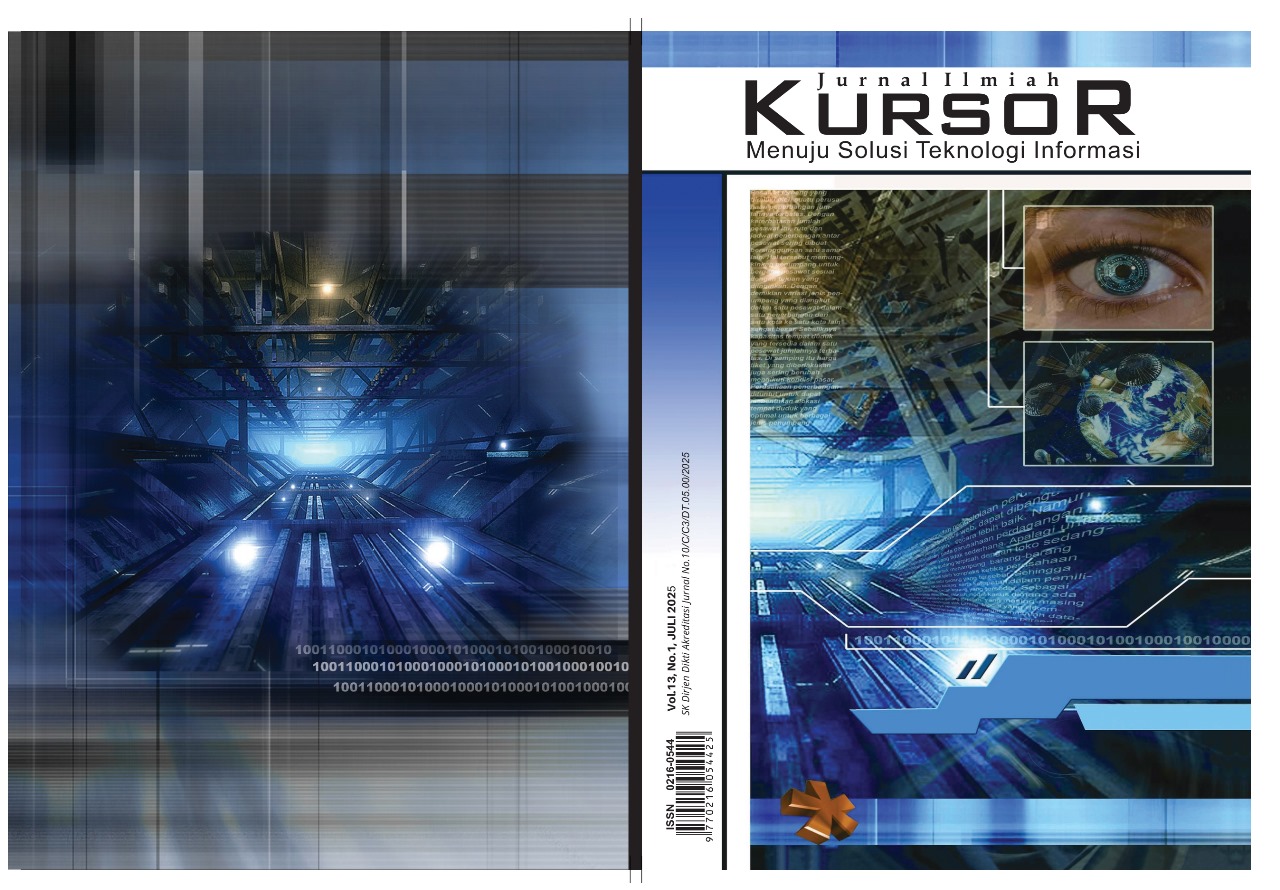Comparative analysis of random forest and deep learning approaches for automated acute lymphoblastic leukemia detection using morphologicaland textural features
DOI:
https://doi.org/10.21107/kursor.v13i1.427Keywords:
acute lymphoblastic leukemia, Deep Learning, medical image analysis, morphological features, Random ForestAbstract
Acute Lymphoblastic Leukemia (ALL) is a type of blood cancer that requires early and accurate detection for effective treatment. Current diagnostic approaches face significant challenges including time-consuming manual examination, inter-observervariability, and difficulty in balancing sensitivity with specificity. This study aims to develop and compare two automated ALL detection methodologies to overcome these limitations. We propose: (1) a Random Forest classifier using carefully engineered morphological and textural features, and (2) a Convolutional Neural Network (CNN)architecture for automated feature learning from microscopic blood cell images. Using 10,661 images from the ALL Challenge dataset, we evaluated both approaches on training (70%), validation (15%), and test (15%) sets. Feature importance analysis revealed cell area (10.71%), energy (10.67%), and skewness (10.50%) as the mostsignificant discriminative features. The Random Forest achieved 85% accuracy withnotable sensitivity for ALL detection (93%), while the deep learning approachdemonstrated superior performance with 87% accuracy and better false positive control(27.50% vs. 35.76%). Our comparative analysis shows that while both methodsdemonstrate clinical viability for automated ALL screening, the deep learning approachoffers advantages in reducing false positives while maintaining high detectionsensitivity. This research contributes to the advancement of computer-aideddiagnostic tools that can support pathologists in early ALL detection,potentially reducingdiagnostic time and improving consistency.
Downloads
References
[1] T. Terwilliger and M. Abdul-Hay, "Acute lymphoblastic leukemia: a comprehensive review and 2017 update," Blood Cancer Journal, vol. 7, no. 6, p. e577, 2017.
[2] J. M. Bennett, D. Catovsky, M. -T. Daniel, G. Flandrin, D. A. G. Galton, H. R. Gralnick and C. Sultan, "Proposals for the classification of the acute leukaemias French-American-British (FAB) co-operative group," British journal of haematology, vol. 33, no. 4, pp. 451-458, 1976.
[3] P. K. Das, S. Meher, R. Panda and A. Abraham, "An efficient blood-cell segmentation for the detection of hematological disorders.," IEEE Transactions on Cybernetics, vol. 52, no. 10, pp. 10615-10626, 2021.
[4] K. AL-Dulaimi, J. Banks, K. Nugyen, A. Al-Sabaawi, I. Tomeo-Reyes and V. Chandran, "Segmentation of white blood cell, nucleus and cytoplasm in digital haematology microscope images: A review—challenges, current and future potential techniques," IEEE Reviews in Biomedical Engineering 14, vol. 14, pp. 290-306, 2020.
[5] P. K. Das, S. Meher, R. Panda and A. Abraham, "A review of automated methods for the detection of sickle cell disease," IEEE reviews in biomedical engineering , vol. 13, pp. 309-324, 2019.
[6] S. Mishra, B. Majhi and P. Sa, "Glrlm-based feature extraction for acute lymphoblastic leukemia (all) detection.," in Recent Findings in Intelligent Computing Techniques: Proceedings of the 5th ICACNI 2017, Singapore, 2018.
[7] S. Mishra, B. Majhi, P. Sa and L. Sharma, "Gray level co-occurrence matrix and random forest based acute lymphoblastic leukemia detection," Biomedical Signal Processing and Control , vol. 33, pp. 272-280, 2017.
[8] M. Sonali, B. Majhi and P. K. Sa, "Texture feature based classification on microscopic blood smear for acute lymphoblastic leukemia detection," Biomedical Signal Processing and Control , vol. 47, pp. 303-311, 2019.
[9] V. Luis HS, R. M. Veras, F. H. Araujo, R. R. Silva and K. R. Aires, "Leukemia diagnosis in blood slides using transfer learning in CNNs and SVM for classification," Engineering Applications of Artificial Intelligence, vol. 72, pp. 415-422, 2018.
[10] A. I. Shahin , Y. Guo, K. M. Amin and A. A. Sharawi, "White blood cells identification system based on convolutional deep neural learning networks," Computer methods and programs in biomedicine, vol. 168, pp. 69-80, 2019.
[11] P. K. Das and S. Meher, "An efficient deep convolutional neural network based detection and classification of acute lymphoblastic leukemia," Expert Systems with Applications , vol. 183, p. 115311, 2021.
[12] S. Mourya, S. Kant, P. Kumar, A. Gupta and R. Gupta, "ALL Challenge dataset of ISBI 2019 (C-NMC 2019) (Version 1) [dataset]," The Cancer Imaging Archive, 2019.
[13] R. S. Riley, D. Massey, C. Jackson-Cook, M. Idowu and G. Romagnoli, "Immunophenotypic analysis of acute lymphocytic leukemia.," Hematology/Oncology Clinics , vol. 16, no. 2, pp. 245-299, 2002.
[14] L. Tsung-Yi, G. Priya , R. Girshick, K. He and Piot, "Focal loss for dense object detection," in Proceedings of the IEEE international conference on computer vision, 2017.

Downloads
Published
Issue
Section
Citation Check
License
Copyright (c) 2025 Windra Swastika, Kestrilia Rega Prilianti, Paulus Lucky Tirma Irawan, Hendry Setiawan

This work is licensed under a Creative Commons Attribution 4.0 International License.








